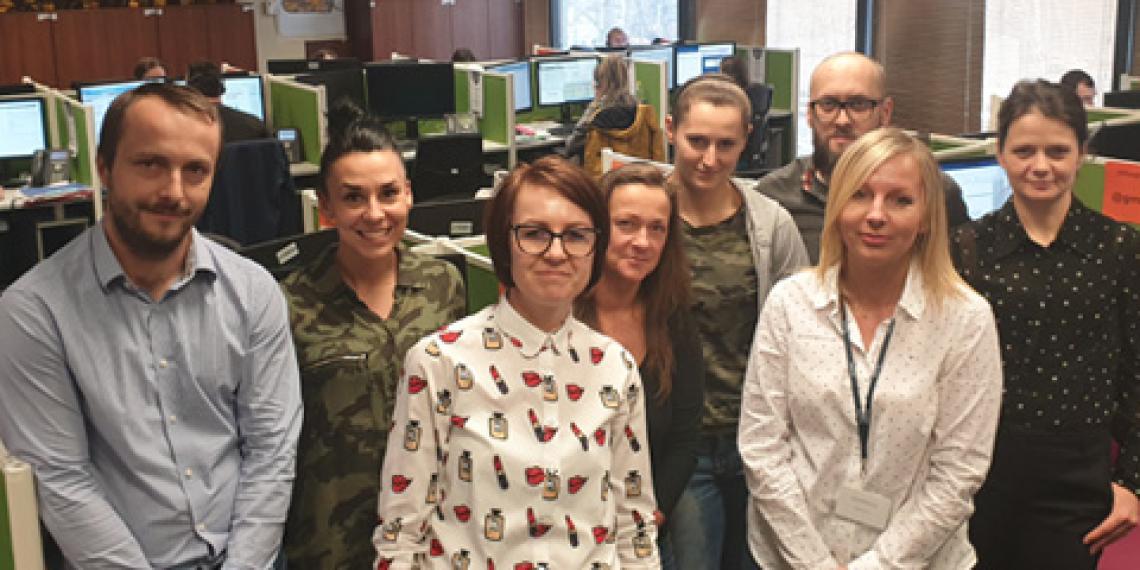Talk to me

Anyone who gets stuck on hold making a phone call needs to bring their patience – sometimes a great deal of patience. "When that happens I switch over to speakerphone and do something else while I'm waiting", Jarosław Paćko remarks. Just how good service should look is something he's very familiar with: the 49-year-old Paćko is in charge of the area "Contact Centre" at TUiR WARTA, one of the HDI Group's Polish subsidiaries. His scope of responsibility includes the call centres, among other things. And that's why he knows very well that even insurers have to struggle with overloaded phone lines at certain times – for example, when particularly large numbers of people want to report damage to their home and vehicle after an extraordinary event such as a hailstorm. "We asked ourselves the question of how we can take the pressure of our hotlines and put the focus on the customer. The goal is to provide immediate and comprehensive assistance when the customer calls to notify a claim", Jarosław Paćko adds.
Better customer service
The answer is artificial intelligence (AI): a virtual assistant is set to give the call centre employees a helping hand going forward. From September onwards the assistant will serve as the first point of contact for all callers wanting to report a claim. The voice bot initially queries basic data such as name, policy number, vehicle type and simple claim information. It then hands over to its human counterparts, who in turn gain time to cater individually to the needs of customers. They need have no fear of the robot taking their job away from them. "Quite the contrary, we are looking to expand our customer service and actually want to take on more people for this purpose", Jarosław Paćko comments. While the voice bot handles simple tasks, it is envisaged that the call centre staff will in future play a more active part in the claims process. "They make arrangements for courtesy vehicles and get in touch with the network of workshops – a considerably more demanding role. Ultimately, this means value added for our customers, who receive a total solution to their problems in a single phone call."
Developed in the space of just six months
21 employees created the virtual assistant in only six months with the aid of agile methods. The pilot phase is currently ongoing. But how do you train a voice bot? "Based on real customer dialogues we taught the bot 90 "grammars". This is the term we use to describe the linking of natural spoken language with certain messages or intentions", Jarosław Paćko explains. "The most difficult challenge was the vehicle number plate. This is because it feels like there are a million different ways of pronouncing and putting the stress on numbers and letters, for example "O" or "zero", "A" or "alpha". To do this, five Contact Centre employees spent seven weeks analysing 40,000 recorded phone conversations. Sentence for sentence, they compared what the customer said and what the voice bot understood – and made manual corrections as necessary.
"We were amazed at first"
A conscious decision had been taken to have the bot sound like a machine and introduce itself as a virtual assistant – in other words, to keep it clearly distinguishable from a real person, Jarosław Paćko explains. As a result, there were no communication problems between human and robot: "We were amazed at first how precisely, concisely and easily intelligibly the customers spoke to the bot." They adjusted to their interlocutor. "When we speak to a robot, we give much clearer answers because we know that the bot cannot process vague statements such as 'maybe'", Jarosław Paćko concludes. Currently, 84 percent of the pilot customers give the virtual assistant a positive or neutral rating. Only 25 percent exit the dialogue with the bot and request a human adviser – an alternative option that is available at all times. When all is said and done, incurring a sudden loss is an exceptional circumstance. And that's where human sensitivity is still needed despite all the advantages offered by AI.